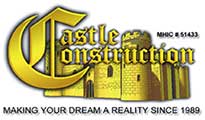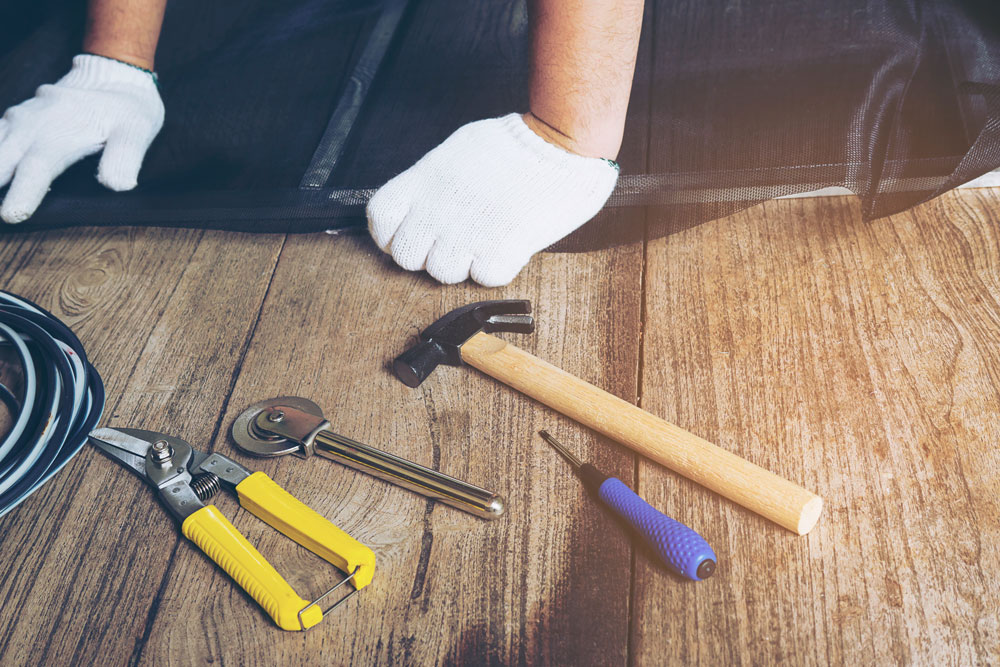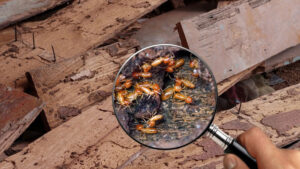Repairing termite damage can be a daunting task, but it is essential to protect your property. Termites are known to cause significant damage to wood structures, and if left unchecked, they can cause structural damage to your home or building. In this article, we will discuss the steps involved in repairing termite damage and how to prevent future infestations.
The first step in repairing termite damage is to identify the extent of the damage. This can be done by a professional termite inspector who will assess the damage and provide a detailed report. Once the damage has been assessed, the next step is to remove all damaged wood and replace it with new, treated wood. It is essential to ensure that all damaged wood is removed to prevent any future infestations.
Recognizing Termite Damage
When it comes to repairing termite damage, the first step is to recognize the signs of an infestation. Termites can cause significant damage to a home or building, and it’s important to catch the problem early to minimize the damage.
Here are some common signs of termite damage to look out for:
Mud tubes: Termites build mud tubes to travel through and protect themselves from predators. These tubes are usually found on the outside of a home or building, but they can also be found inside walls or crawl spaces.
Swarmer’s: Termite swarmer’s are winged insects that emerge from the colony to mate and start new colonies. If you see swarmer’s inside your home or building, it’s a sign that there is an active termite infestation.
Wood damage: Termites eat wood from the inside out, so it can be difficult to detect damage until it’s severe. Look for buckling or sagging floors, hollow-sounding wood, and wood that is easily pierced by a screwdriver or other tool.
Fras: Termite droppings, or Fras, are small pellets that resemble sawdust or coffee grounds. If you see grass around your home or building, it’s a sign that termites are present.
If you suspect that you have a termite infestation, it’s important to contact a professional for an inspection and treatment. Trying to DIY termite control can often make the problem worse and lead to more damage.
Understanding the Extent of Damage
When it comes to repairing termite damage, the first step is to understand the extent of the damage. This will help us determine the best course of action to take. In this section, we will discuss the two types of damage that termites can cause: surface damage and structural damage.
Surface Damage
Surface damage is the most common type of damage caused by termites. This type of damage is usually limited to the surface of the wood and does not affect the structural integrity of the building. Signs of surface damage include:
- Small holes in the wood
- Cracks in the paint or wallpaper
- Buckling or bubbling of the floor
If you notice any of these signs, it is important to have your home inspected by a professional to determine the extent of the damage.
Structural Damage
Structural damage is less common but much more serious than surface damage. This type of damage affects the structural integrity of the building and can lead to collapse if left untreated. Signs of structural damage include:
- Sagging or uneven floors
- Cracks in the walls or ceiling
- Doors or windows that are difficult to open or close
If you notice any of these signs, it is important to have your home inspected by a professional as soon as possible. The longer you wait, the more extensive the damage will become, and the more expensive it will be to repair.
In conclusion, understanding the extent of termite damage is crucial in determining the best course of action for repair. Surface damage is common and can be easily fixed, while structural damage is less common but much more serious and requires immediate attention. If you suspect that your home has termite damage, it is important to have it inspected by a professional to ensure that the damage is properly assessed and repaired.
Choosing the Right Repair Method
When it comes to repairing termite damage, there are two main options to consider: DIY methods and professional services. Each option has its own advantages and disadvantages, so it’s important to choose the right method for your specific situation.
DIY Methods
If you’re handy and have experience with home repairs, you may be able to tackle termite damage on your own. However, keep in mind that DIY methods may not be as effective as professional services, and you could end up causing further damage if you don’t know what you’re doing.
If you decide to go the DIY route, here are a few methods to consider:
- Wood hardeners: These products can be used to strengthen damaged wood and prevent further damage from termites.
- Epoxy fillers: Epoxy can be used to fill in gaps and cracks in damaged wood, restoring its structural integrity.
- Borate treatments: Borate is a chemical that can be applied to wood to prevent termite infestations.
Professional Services
For more serious termite damage, it’s best to leave the repairs to the professionals. They have the knowledge, experience, and equipment to properly assess the damage and choose the most effective repair method.
Here are a few professional services to consider:
- Structural repairs: This may involve replacing damaged wood or reinforcing it with steel or concrete.
- Fumigation: If the infestation is severe, fumigation may be necessary to eliminate the termites.
- Prevention treatments: Professionals can apply chemical treatments to prevent future termite infestations.
Overall, the right repair method will depend on the extent of the damage and your level of expertise. If you’re unsure, it’s always best to consult with a professional to ensure the repairs are done correctly and effectively.
Repairing Surface Damage
When repairing termite damage, it’s important to address any surface damage as well. Surface damage can be unsightly and weaken the overall structure of the wood. Here are two common methods for repairing surface damage:
Wood Filler
Wood filler is a popular choice for repairing surface damage because it’s easy to use and dries quickly. Here’s how to use wood filler:
- Clean the damaged area with a brush or vacuum.
- Mix the wood filler according to the manufacturer’s instructions.
- Apply the wood filler to the damaged area with a putty knife.
- Smooth the wood filler with the putty knife.
- Let the wood filler dry completely.
- Sand the wood filler until it’s smooth.
- Stain or paint the area as desired.
Epoxy Resin
Epoxy resin is another option for repairing surface damage. It’s a strong adhesive that can fill in gaps and cracks. Here’s how to use epoxy resin:
- Clean the damaged area with a brush or vacuum.
- Mix the epoxy resin according to the manufacturer’s instructions.
- Apply the epoxy resin to the damaged area with a putty knife.
- Smooth the epoxy resin with the putty knife.
- Let the epoxy resin dry completely.
- Sand the epoxy resin until it’s smooth.
- Stain or paint the area as desired.
Both wood filler and epoxy resin can be effective for repairing surface damage. The choice between the two will depend on the severity of the damage and personal preference.
Repairing Structural Damage
When it comes to repairing termite damage, structural damage is one of the most serious issues that homeowners can face. Structural damage can weaken the foundation of your home, making it unsafe to live in. In this section, we’ll cover two common methods for repairing structural damage: sistering joists and replacing damaged wood.
Sintering Joists
Sintering joists is a common method for repairing damaged floor joists. This technique involves attaching a new joist to the old one to provide additional support. Here’s how we do it:
- Cut a new joist to the same length as the damaged one.
- Apply construction adhesive to the damaged joist.
- Attach the new joist to the damaged one using screws or nails.
- Add additional support by attaching metal brackets to both joists.
Sistering joists can be an effective way to repair damaged floor joists. However, it’s important to note that this method may not be suitable for all types of damage. If the damage is too severe, you may need to replace the damaged joist entirely.
Replacing Damaged Wood
Replacing damaged wood is another common method for repairing structural damage caused by termites. This technique involves removing the damaged wood and replacing it with new, healthy wood. Here’s how we do it:
- Use a circular saw to cut out the damaged wood.
- Cut a new piece of wood to the same size as the damaged piece.
- Apply construction adhesive to the new piece of wood.
- Attach the new piece of wood to the existing structure using screws or nails.
- Sand the new wood to match the existing finish.
Replacing damaged wood can be a more time-consuming process than sistering joists, but it’s often necessary for severe damage. It’s important to note that this method may require additional work, such as repainting or refinishing the affected area
In conclusion, repairing structural damage caused by termites is a serious task that requires careful attention to detail. Sistering joists and replacing damaged wood are two common methods that can be used to repair this type of damage. If you’re not sure which method is right for your situation, it’s best to consult with a professional.
Preventing Future Termite Infestations
Termite Treatments
To prevent future termite infestations, we recommend using preventative termite treatments. These treatments can be done before or after a termite infestation has occurred. Some common termite treatments include:
Liquid termiticides: These are chemicals that are applied to the soil around the foundation of your home. They create a barrier that termites cannot cross, preventing them from entering your home.
Bait stations: These are small stations that are placed around the perimeter of your home. They contain a bait that termites are attracted to, and once they feed on the bait, they take it back to their colony, which can help eliminate the entire colony.
Wood treatments: These are chemicals that are applied to the wood in your home to make it less attractive to termites.
It’s important to note that termite treatments should only be done by a licensed professional. Improper use of chemicals can be dangerous to you and your family, as well as the environment.
Regular Inspections
Regular inspections are also important in preventing future termite infestations. We recommend having your home inspected at least once a year by a licensed professional. During the inspection, the professional will look for signs of termite activity, such as mud tubes, damaged wood, and termite droppings.
If termite activity is found, the professional will recommend treatment options. If no activity is found, the professional may recommend preventative measures to ensure that your home remains termite-free.
In addition to professional inspections, there are some things you can do to help prevent termite infestations, such as:
- Remove any wood debris or mulch from around your home.
- Keep firewood away from your home.
- Fix any leaks or moisture problems in your home.
- Ensure that your gutters are clean and functioning properly.
By taking these preventative measures and having regular inspections, you can help prevent future termite infestations and protect your home from damage.
Conclusion
In conclusion, repairing termite damage can be a daunting task, but it is not impossible. We have discussed various methods that can be used to repair termite damage, including replacing damaged wood, using insecticides, and sealing cracks and crevices. It is important to note that prevention is always better than cure when it comes to termites. Regular inspections and maintenance can help detect termite infestations early and prevent extensive damage. We also recommend seeking professional help when dealing with termite damage, especially if the damage is extensive or if the infestation is severe. Professional exterminators and contractors have the expertise and tools necessary to effectively repair termite damage.
Overall, repairing termite damage requires patience, diligence, and a willingness to invest time and resources. With proper prevention measures and timely repairs, we can protect our homes and properties from the destructive effects of termites.


